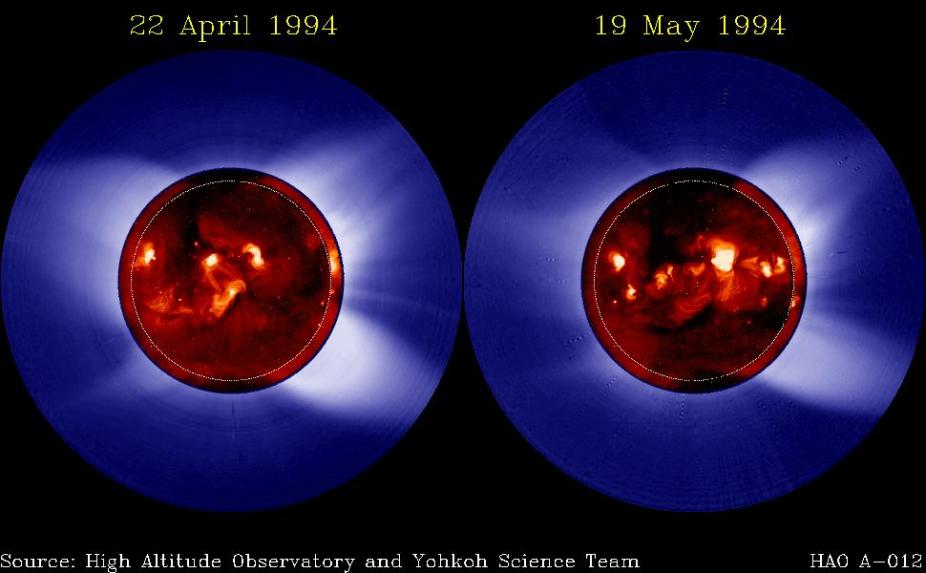The Solar Corona in White Light and X-rays
Eclipses do not occur very often and last only a few minutes, and so systematic studies of the solar corona are carried out using an eclipse-simulating telescope. Such instruments are commonly known as coronagraphs or coronameters, depending on design.

April 22, 1994: Two coronal images.
These two coronal images (blue - white) were obtained with a coronameter operating from the Mauna Loa Solar Observatory in Hawaii. Streamers are again clearly visible. These images were taken 27 days apart, in other words they are separated by a time interval corresponding to one full solar rotation (based on the equatorial rate and as seen from the Earth); the fact that the distribution of helmet streamers are similar on both images indicates that the large-scale corona has evolved very little during this time interval. The morphology and brightness of active regions, as revealed by X-ray images of the solar disk taken on the same days (red - orange - yellow images superimposed on the center of the coronameter images), show more dramatic differences. This is a first indication that the global, large-scale structure of the corona evolves in a manner that is at least partially decoupled from the evolution of active regions. Further evidence can be obtained by noting that helmet streamers typically extend much higher in latitude than active regions, sometimes even as high as the poles (as on slide 9). Note how coronal holes can also be seen in white light, as regions devoid of helmet streamers or other bright coronal structures. This is particularly conspicuous over the North solar pole on both these images, as well as on some eclipse photographs (see slide 10, and the cover of this booklet). The fact that coronal holes look dark in white light indicates lower gas densities than in bright structures such as helmet streamers. Coronal holes look dark in X-rays in part because of the lesser densities, but also because less heating occurs there. This suggest that coronal holes are regions of open magnetic fieldlines, along which coronal gas can flow outward into interplanetary space in the form of the solar wind. Within helmet streamers, on the other hand, the coronal material is effectively trapped by the closed magnetic fieldlines, with the enhanced densities leading to detectable levels of X-ray emission even for ordinary heating rates. On the smaller spatial scales of active regions, gas is trapped and overheated with little possibility of escape, leading to enhanced X-ray brightness.
Written By P. Charbonneau and O.R. White–April 18, 1995